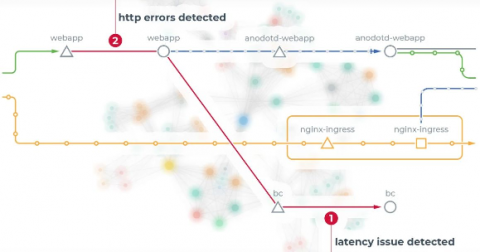Operations | Monitoring | ITSM | DevOps | Cloud
Alerting
How AIOps Reveals Deep Value from Log Analysis
The volume and ambiguity of log files makes them impossible for humans to process. The promise of logs is revealed when AIOps is applied to analyze their deep structure.
The Missing Functionalities of Service Mesh Technologies - Native Anomaly Detection and Incident Correlation
Rapid software release is the new norm – and that has pushed many companies to ditch their monolithic software development approach in favor of SOA. More companies are embracing microservices – an SOA-style approach for developing and deploying business logic as small, independently deployed services – for a number of reasons: it reduces risk, is faster to deploy and it easily scales.
Making on-call superheros
Building a world-class service is as much about maintaining software as it is about developing it. On-call engineers are typically responsible for ensuring the reliability and availability of your service i,e your reputation, and source of revenue. Robust on-call schedules ensure that the right people are ready-to-go during times of crisis. Organizations continue to depend on on-call schedules and incident response processes that are a source of stress/anxiety or panic to employees.
5 Best Practices on Nailing Postmortems
SREcon19 AsiaPacific -"Transparency in Incident response" Lightning Talk
A 5-Step Recipe for Spot-On Alerts - That May Just Save Your Marriage
While checking in recently with one of Anodot’s newest clients, I got the sort of feedback that every product owner loves hearing. I asked, “During this past month, have you been able to check alerts triggered for your region? Do you use them? Do you have any feedback?” They replied, “The alerts are spot on. Thanks all.” The company then went on to adopt Anodot across more teams. So why are we so obsessed with alerts being spot-on?
How Automation is Driving the IT Workforce of the Future
The world of IT is changing and altering the face of the workforce. New technologies, like AI, cloud and IoT, have morphed IT infrastructure into an extremely complex beast and, in doing so, have impacted the work of those who manage it. Meanwhile the European Commission estimates there will be a shortage of 756,000 skilled IT workers by next year.
Horizontal Innovation and Healthcare: Order vs. Chaos
Horizontal innovation refers to the inculcation of technological advancements in different industries and domains of human life. When we imagine how these life-changing technologies are poised to change our lives, at the beginning of their adoption curve, the future is somewhat filled with hopes and fears. Statisticians and logicians have shown their support for the induction of these technologies into our lifestyle – and rightly so.











